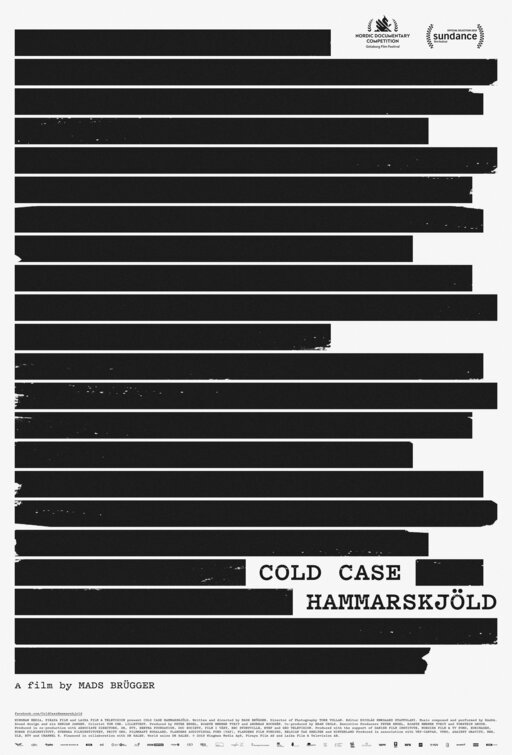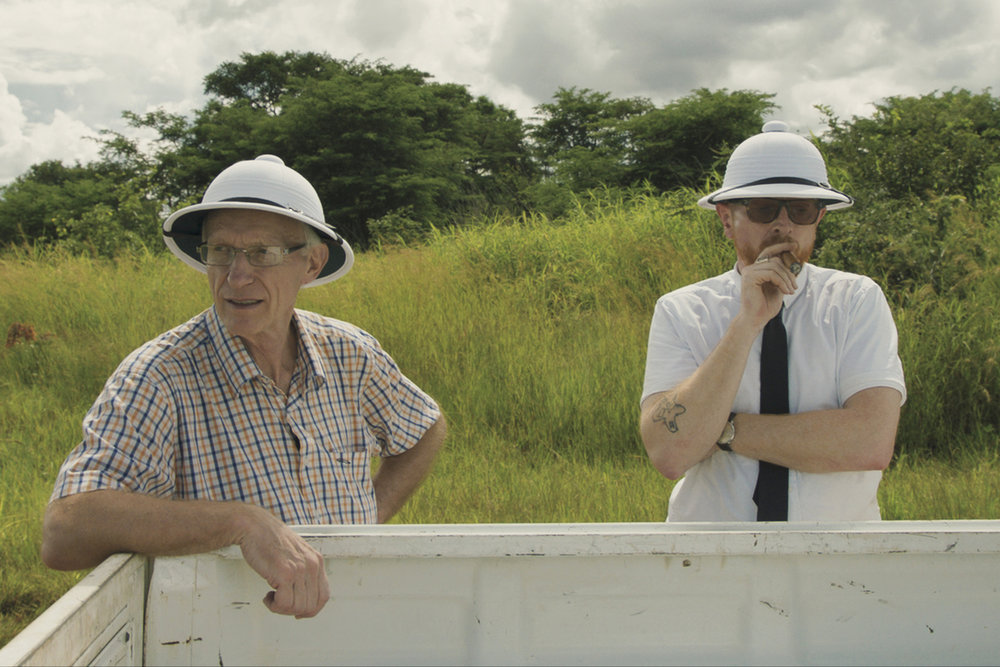Cold Case Hammarskjöld (2019)


SHOULD I SEE IT?
YES
I literally have no idea what to think of this film, which I think is the intent?
There is an honesty threading through the making of this film, playing out on screen, which is admirable and I kind of appreciate it, to be honest.
This film is wild. It uncovers far more evidence of alleged attempts to kill scores of brown-skinned African people through sanctioned racial cleansing practices in South Africa, clandestine assassination efforts around the world by numerous governments, including the United States and Britain, basically rendering Hammarsköld’s death, the film’s initial thesis, as an afterthought by the end.
NO
At times, one of the most unintentionally aggravating documentaries of recent memory. And yet, I may love the movie all the more for it? Not all of you will though.
Brügger’s framing device of recounting everything he has learned, in six years of research, to two different African women who listen, say little, and take dictation on typewriters (?!) is…I mean…well, the optics alone are a bit problematic, unnecessary, and could upset some viewers. Facts he acknowledges during the movie. What?!
Are general audiences really going to care about this? Or is this all spectacle and edited for show? The answer is probably no and yes, and yet, I find myself here for all of it.
OUR REVIEW
During a scene in the bizarre, scattershot, true crime documentary Cold Case Hammarskjöld, writer/director Mads Brügger tells fellow researcher Göran Björkdahl that for a trip they are taking to Zambia, he has arranged two pith helmets, two brand new shovels, a metal detector, and two expensive cigars to take on an excavation of a potential plane crash site. After a pause, Björkdahl offers, “I don’t smoke.”
Brügger becomes visibly flustered and seems unable to process such a comment.
In other scenes throughout the film, Brügger sits in a hotel room chair, pontificating about everything he and Björkdahl has uncovered regarding the mysterious circumstances surrounding the death of United Nations Secretary General Dag Hammarskjöld in September 1961. That there are two different women of African descent, Saphir Wenzi Mabanza and Clarinah Mfengu, at two different meetings, sitting at a typewriter (a typewriter…?!) taking dictation, typing up notes, and offering responses like “Oh,” “Uh huh,” and “Hmmm…,” as he drones on and on is as random, wild, and cringe-inducing as it sounds.
Did I mention he is wearing all-white clothing, because a suspect in their investigation was a hideous white supremacist, who reportedly wore only white and Brügger is trying to get inspiration from that decision to help him focus on his research and documentary?
These moments merely scratch the surface of this baffling, puzzling, fascinating creation.
Brügger, as zealous as anyone you will ever see in a film like this, has decided, at first, that his efforts as a filmmaker is to get to the bottom of one of the lingering mysteries of recent world history…
Who killed Dag Hammarskjöld?
Rumors go that his plane was shot down over Rhodesia in 1961. Evidence shows a bomb may have detonated minutes before the plane would descend onto the airstrip. His death gave rise to conspiracies, and those theories gained traction when Björkdahl, a Swedish journalist, was given a metal plate purportedly seized from the plane transporting the Secretary General and his staff. Consumed with the conspiracies, he and Brügger then formed an alliance to solve the case.
Oh boy.
For the first 75 minutes, Cold Case Hammarskjöld becomes an intermittently fascinating (and frustrating) procedural. Dignitaries are cornered, politicos are interviewed, our researchers travel all over, view archived documents, encounter redactions, and are stonewalled or given piece mail in multiple conversations. Of course, Brügger’s info-dumps on those poor, unwitting assistants are odd, and ultimately become the director trying to outline how he plans on making the very movie we are watching.
What is happening?

At about the 75-minute mark, Brügger admits, in one of the things I love most about the movie, he is out of his depth. He basically calls himself a hack, throws up his hands, wonders just what he has been doing all of this for, and pretty much gives up.
Until…through the miracle of movie magic (or Nicolás Nørgaard Staffolani’s editing prowess), a huge breakthrough occurs when Alexander Jones, a clandestine member of the South African Institute for Maritime Research (SAIMR) agrees to talk to the tandem, on camera, and essentially come clean about everything he saw, knows, and was told about not only Hammarskjöld’s assassination, but the true mission of SAIMR.
For the next 40 minutes, the movie jolts alive and Jones spills all the tea…and I mean, all the tea. SAIMR, whose existence is denied by people interviewed in the film prior to Jones’ arrival, was a South African secret government operation, led by Keith Maxwell (the white-clothed villain Brügger was channeling in the first section of the movie), who traveled around the world and “took care” of situations, with alleged funding from organizations like MI5 and the CIA. He draws a causal link between both of those organizations and claims that evidence recovered at the scene proves the CIA had Hammarskjöld killed.
Maxwell, per evidence obtained by Brügger and Björkdahl, turns out to be one of the most despicable human beings to ever live. Under aliases, he fancied himself a medical doctor and this information sends the movie off in a whole different direction, introducing the concept of fake inoculation clinics, weaponizing the AIDS virus, and other unconscionable discoveries.
But I thought this was about the death of Dag Hammarskjöld in 1961? I know, right?!
This movie blew my mind. Not only is it fitfully frustrating to sit through at times, and again those women assistants create such ugly optics, but it also becomes one of the most shocking and incendiary documentaries I have seen in quite some time.
Nothing of course is truly substantiated in the Alexander Jones portion of the film, and a title card indicates he has gone into hiding after the interviews for the film were completed. Presented as fact, all of this seems so outlandish, and yet, is shared with such conviction, you find the allegations hard to question.
Tenuous connections are made between Maxwell, SAIMR, and Hammarskjöld’s assassination, but Brügger is kind of a stand-in for how we all would likely react to this detail. His eyes grow wide and those scenes with his two African assistants, could be as innocent enough as just being employees he’s needing to talk all of this through with.
But, then again, it’s probably not that and Brügger even admits he has no idea why he has two African women, sitting in hotel rooms, typing up his notes. He even goes so far as to admit he cannot defend his decision to frame his movie in this way.
And so it goes with the bizarre and free-wheeling Cold Case Hammarskjöld, a documentary as easily dismissive of its very existence as it is absolutely thrilled with its own discoveries.
CAST & CREW
Documentary Featuring: Mads Brügger, Göran Björkdahl, Alexander Jones, Tienie Groeneweld, Karl Feil, Saphir Wenzi Mabanza, Clarinah Mfengu.
Director: Mads Brügger
Written by: Mads Brügger
Release Date: August 16, 2019
Magnolia Pictures
